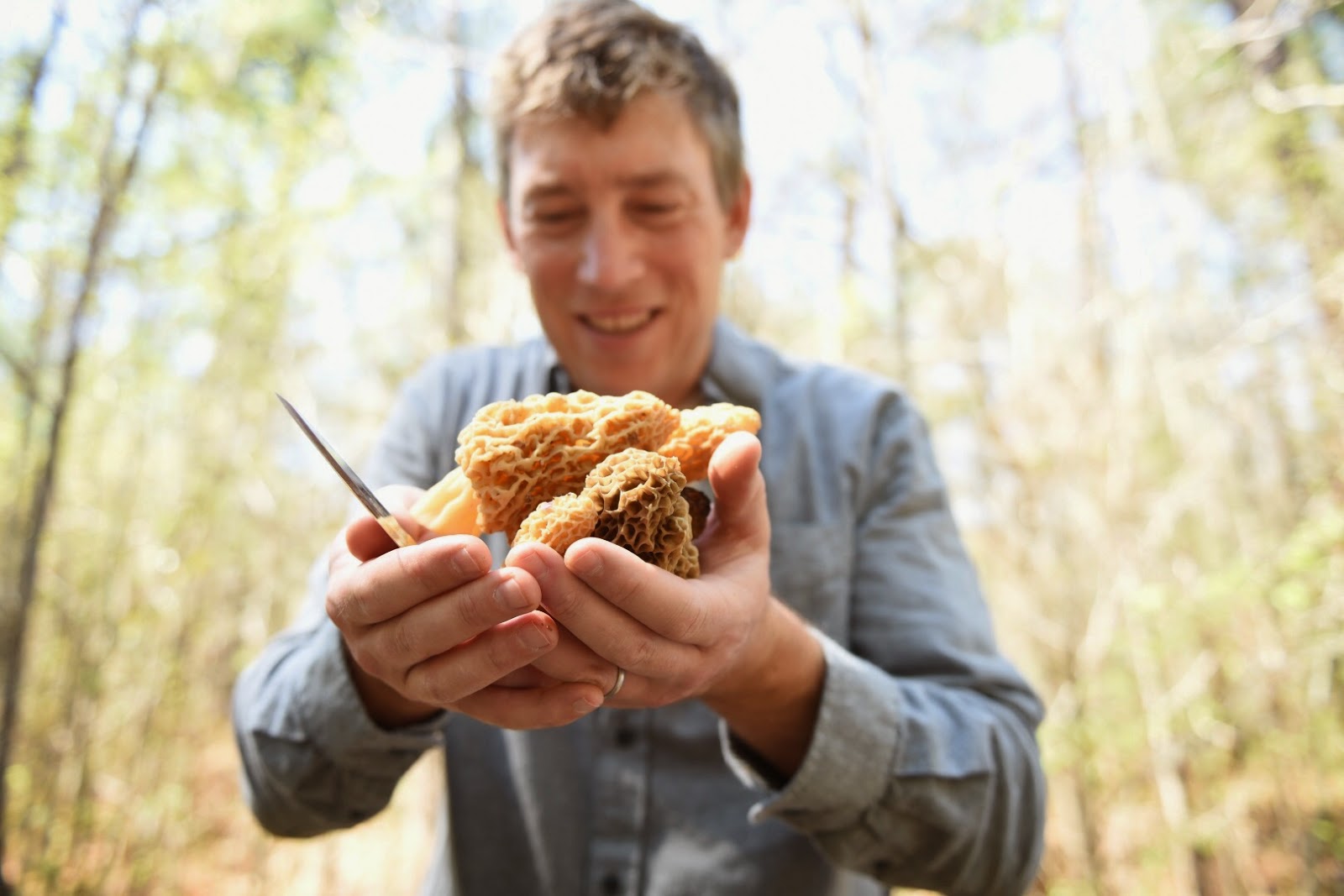The last time I'd spent any significant amount of time in the region was twenty-five years ago, during a spring break from college that involved some sketchy camping and maybe a little foraging for beer. Earlier this month I had a chance to visit again and speak to mushroom clubs in Georgia, South Carolina, and North Carolina. Though fungal diversity was nowhere near what it will be come summer, the spring wildflowers were out—and so were the morels.
The habitat was so different from what I'm used to in the West. Along with members of the Mushroom Club of Georgia, we scouted river bottoms, looking for concentrations of green ash. One spot within the Atlanta Metro area, filled with dog-walkers and picnickers, delivered in spades. Meanwhile, I was trying to wrap my head around all these hardwood trees that were just beginning to leaf out. Oaks and hickories, buckeyes and magnolias—too many to count, much less identify.
And like the trees, the morels were different too. Depending on which taxonomy you're following, they carry the scientific name Morchella americana or Morchella esculentoides. Most people call them yellows. I don't see them very often in the Pacific Northwest, though they do fruit in a few cottonwood bottomlands in select locales.
The other hazard is from the plant kingdom: poison ivy. The nasty stuff was all over the woods, and at one point while I was taking a breather, leaning casually against one of the many bewildering, unidentifiable hardwoods, my companion suggested I might want to remove my hand from the thick vine of poison ivy that was trellising up the trunk. Doh!
In South Carolina, my next stop, I visited Mushroom Mountain, where cultivator Tradd Cotter is growing enough mushrooms, such as these elm oysters pictured at right, to interest Whole Foods. As for the wild ones, the yellows that I found were much smaller and grew mostly with tulip poplars. Locals call them tulip morels. Cryptic and incredibly hard to find (see below), they hid among the leaf litter, often barricaded by poison ivy. With help from the South Carolina Upstate Mycological Society, affectionately known as SCUMS to its members, we sleuthed them out, again in river bottom woods.
The Asheville Mushroom Club in North Carolina was my last stop, but we snuck over the border into Tennessee for morels, where we found the tulip variety as well as my first eastern black morels, pictured below, which proved tricky to spot given all the fallen leaves.
We hunted an area on the edge of Smoky Mountain National Park, where trillium, violets, trout lilies (pictured above) and other wildflowers were in full glorious bloom. The Smokies, I'm told, hold the highest plant biodiversity in North America. Whereas we have one species of trillium in the Pacific Northwest, the Southeast has forty!
Next time—and there will definitely be a next time—I'm returning with my backpack and tent so I can disappear into the Smokies or the Blue Ridge for a spell. Brook trout with wild mushroom stuffing, anyone?



















4 comments:
This looks like a blast! I can hardly wait until they start coming up in MN. And because I'm a nurse and can't help myself, if you really were bit by a deer tick who could carry Lyme disease, I recommend calling your doctor. Not all Lyme bites will have a bullseye. Many doctors will prescribe an antibiotic as a precaution if you fit certain criteria and they can also do a blood test for Lyme. It's very important to catch it early so you can't be too safe!
Thanks for the medical advice, Angie!
Georgia is definitely the best place on the east coast to find morels. The farther up the east coast you go the harder they are to find. I live in Virginia and the trees of choice are old growth/unattended apple orchards, poplar, and dead or dying elms. Ticks are a real problem here on the east coast and you do run a significant risk every time you enter the woods.
This exactly describes my experience hunting for morels this year (for the first time!) ticks, poison ivy, and plenty of delicious mushrooms. It's so interesting foraging in a totally different environment!
Post a Comment